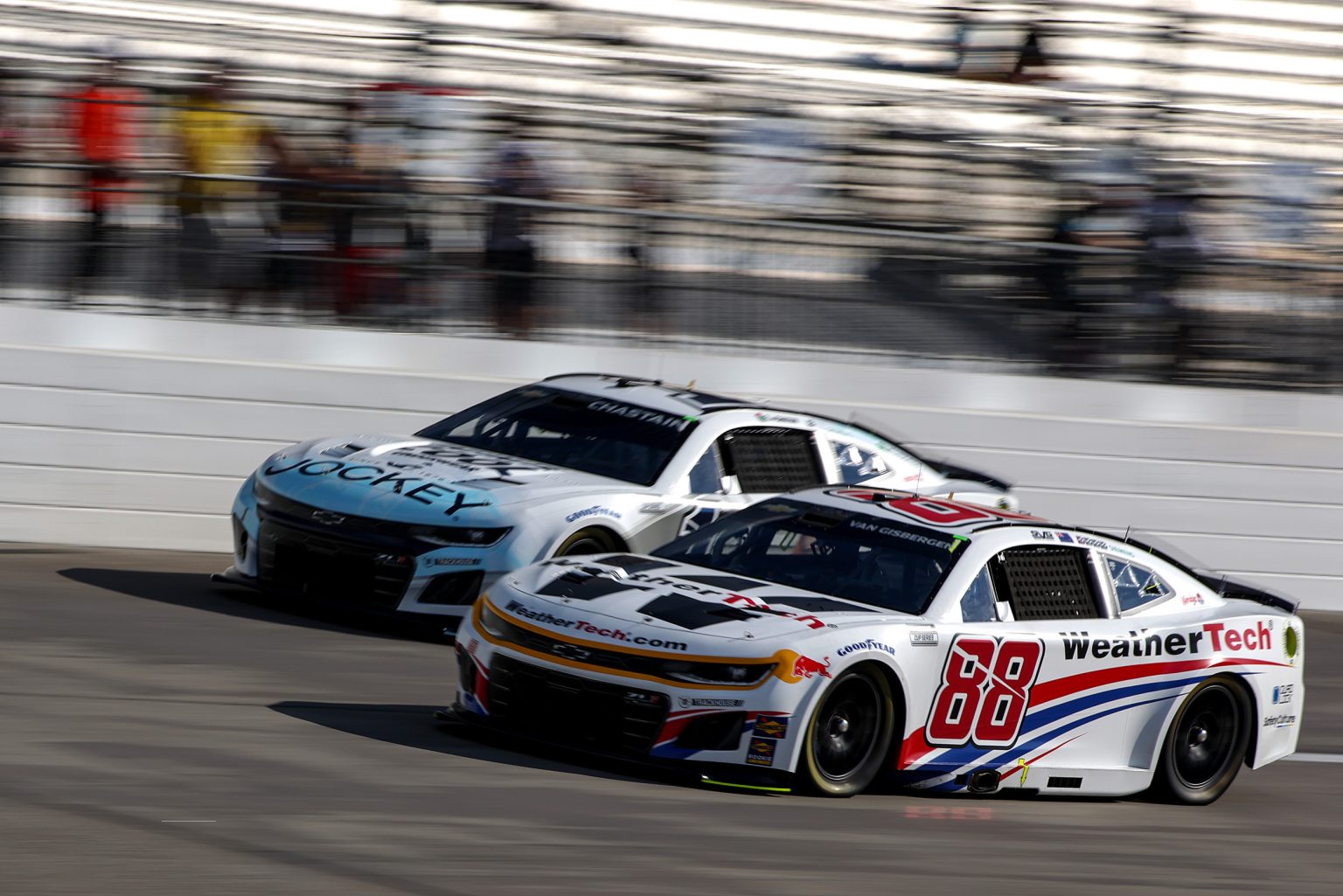NASCAR Investigates Trackhouse Racing’s Post-Race Grass Driving Tactics
In the high-stakes world of NASCAR, where championships can be decided by fractions of seconds and minor technical advantages, officials have recently turned their attention to some unusual post-race behavior from Trackhouse Racing. Both Shane Van Gisbergen and Ross Chastain were observed driving their cars over grassy areas during the cool-down lap at World Wide Technology Raceway, raising eyebrows among competitors and officials alike. This seemingly innocent detour has deeper implications, as NASCAR Cup Series managing director Brad Moran confirmed the actions are under investigation.
The practice of driving over grass or dirt after a race isn’t random or accidental. It’s a calculated tactic seen across various motorsports disciplines, where drivers deliberately seek out muddy or grassy terrain to add weight to their vehicles. As their hot tires collect dirt and debris, the additional weight can help cars meet minimum post-race weight requirements during inspection. For teams operating on the razor’s edge of these regulations, this could mean the difference between maintaining a hard-earned position or facing disqualification. Both Trackhouse drivers were spotted not only traversing the grass but also taking an emergency lane to pit road afterward, behavior that was noticed by competing drivers who understood exactly what was happening.
NASCAR’s rulebook contains specific provisions to prevent such manipulation tactics, which is why the governing body is taking the matter seriously. “We’ll be having some discussions with Trackhouse management, as well as their crew chiefs,” Moran stated, indicating the issue had “certainly caught our radar.” He emphasized that existing rules could put teams in “a real bad spot” when such behavior is detected, suggesting potential penalties could be significant. The governing body plans to clarify expectations to all teams before the upcoming Bristol race, setting a clear precedent as the playoff season intensifies. This intervention highlights NASCAR’s ongoing challenge of maintaining competitive integrity while teams constantly search for advantages within—or occasionally beyond—the rulebook’s boundaries.
The timing of this investigation is particularly significant as NASCAR enters its crucial playoff period, where every point and position carries amplified importance. The governing body finds itself balancing strict rule enforcement with the reality that teams will push boundaries during this high-pressure phase of the season. Moran’s measured response suggests NASCAR wants to address the issue without dramatically altering the competitive landscape mid-playoffs. By choosing to issue warnings rather than immediate penalties, officials are signaling their desire to maintain fair competition while acknowledging the heightened stakes of playoff racing. For Trackhouse Racing, which has emerged as a competitive force in recent seasons, this scrutiny comes at a delicate time when championship aspirations remain very much alive.
Interestingly, NASCAR officials are simultaneously addressing another common practice—drivers stopping at teammates’ pit boxes to have loose lug nuts tightened. While technically against regulations, Moran indicated the sport was taking a more lenient approach to this particular issue, especially during playoffs. “Everybody’s pushing and it’s game time now,” he acknowledged, revealing NASCAR’s pragmatic side when safety considerations enter the equation. “We certainly do not want tires out on the racetrack when cars are running at speed,” Moran explained, suggesting that preventing dangerous on-track incidents takes precedence over strict enforcement of pit road protocols. This balanced approach demonstrates NASCAR’s willingness to prioritize driver safety while maintaining competitive standards, even if it means allowing certain minor infractions to continue with existing penalty structures.
As the season progresses toward its championship conclusion, NASCAR’s handling of these technical violations will be closely watched by teams and fans alike. Moran’s closing comments—”Who knows where we’ll be in another eight races”—hint at the evolving nature of NASCAR’s regulatory approach, suggesting that enforcement priorities may shift as the championship battle intensifies. For now, Trackhouse Racing has been put on notice, as have all competitors looking to gain advantages through post-race weight manipulation tactics. The situation perfectly encapsulates the constant cat-and-mouse game between NASCAR and its teams, where innovation and rule interpretation remain central to the sport’s competitive dynamic. As teams continue pushing boundaries in pursuit of victory, NASCAR’s challenge remains finding the right balance between encouraging competitive racing and maintaining the technical integrity that underpins the sport’s credibility.


